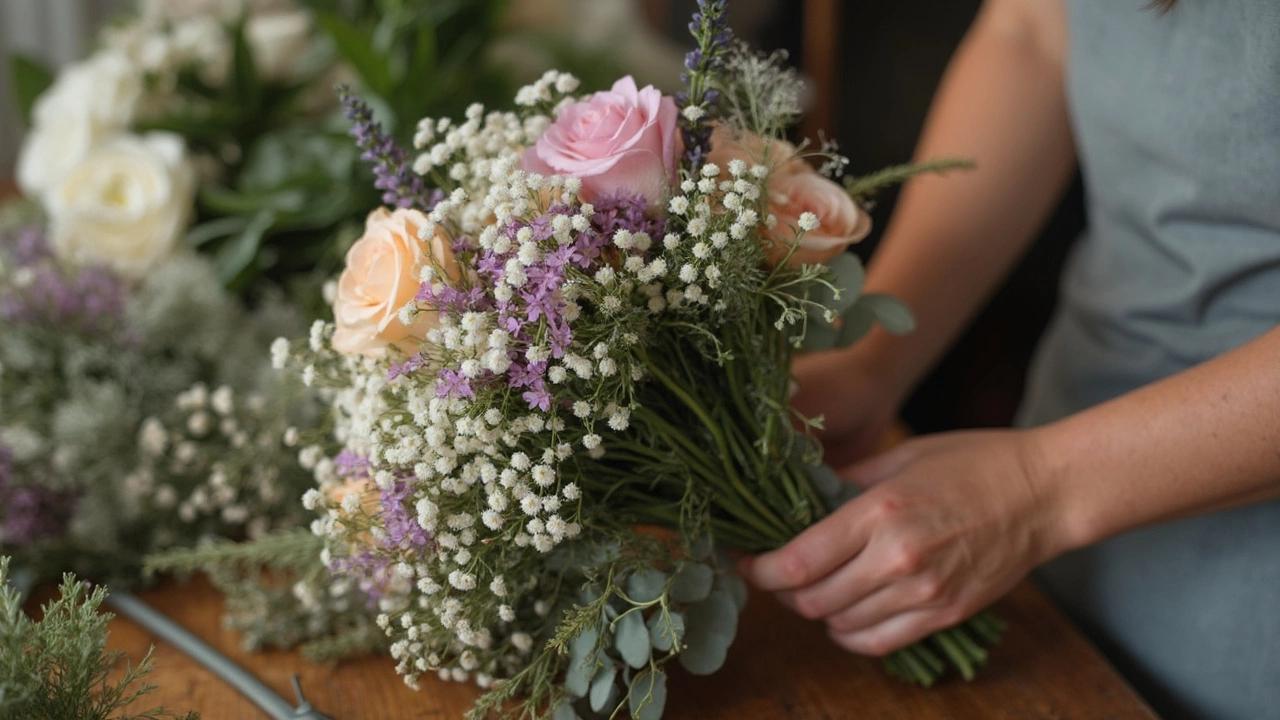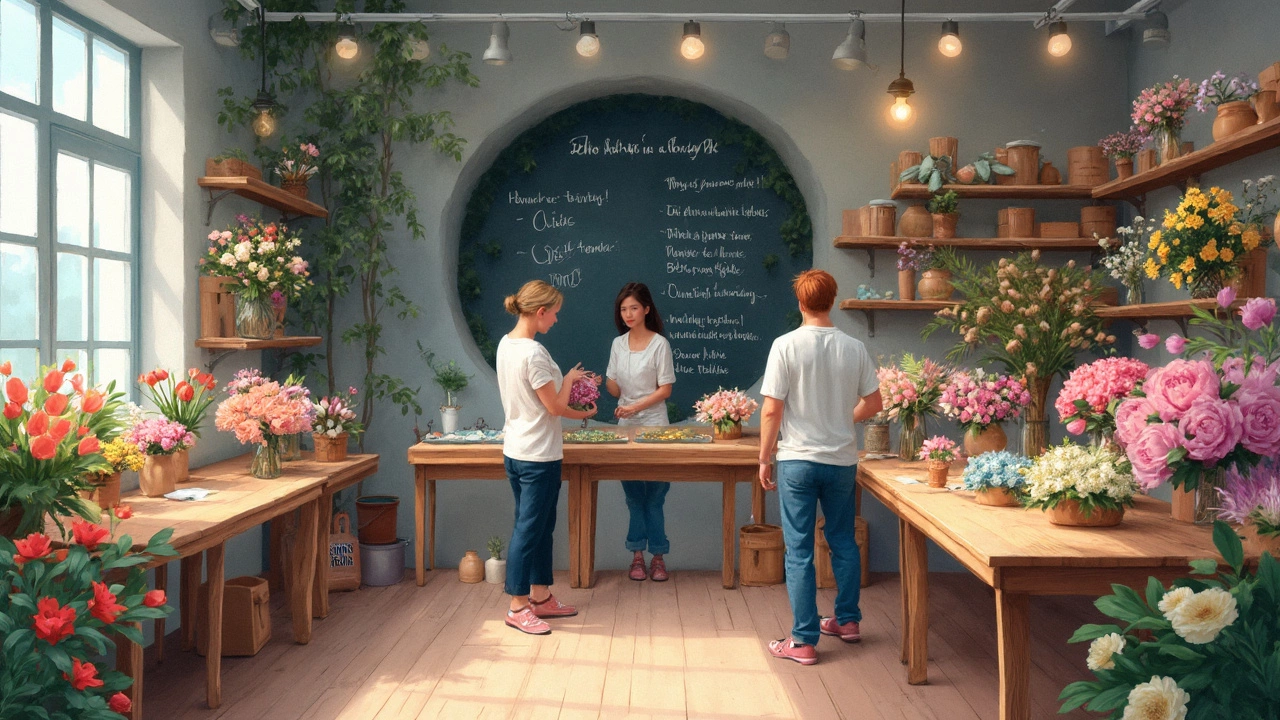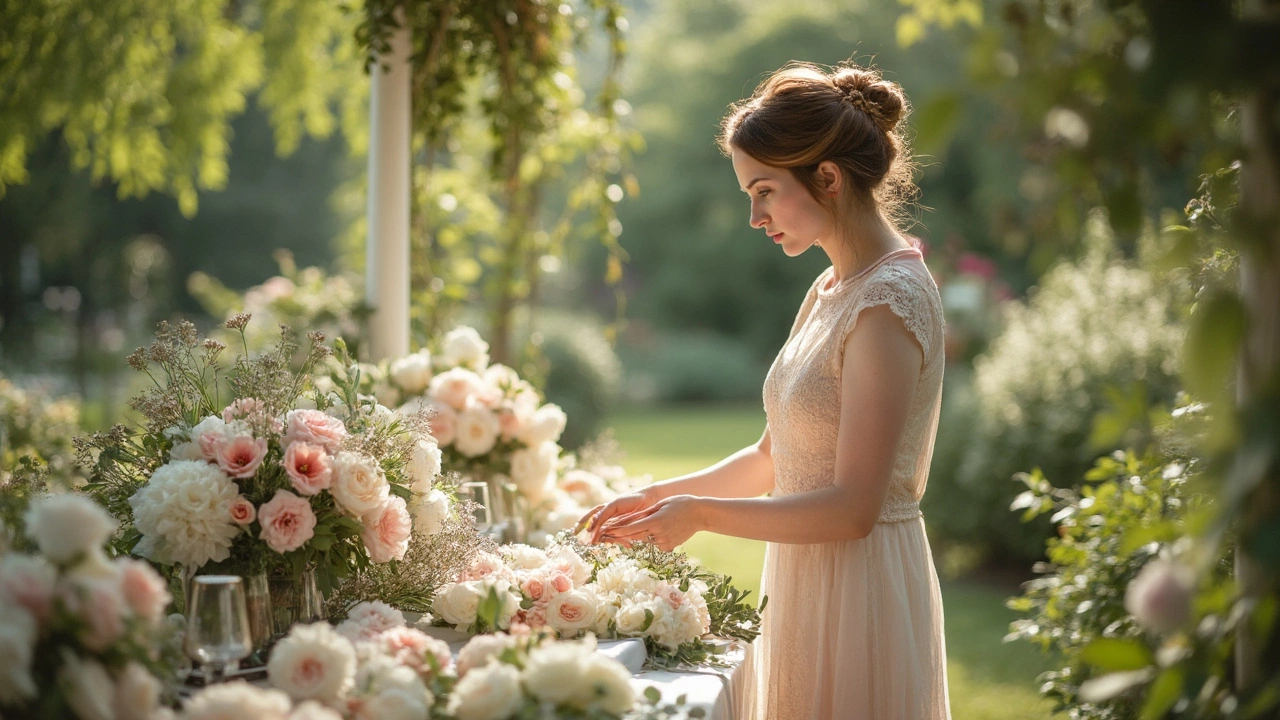Wedding planning can be a whirlwind, with so many details to consider. One of the vital aspects of setting the right tone is choosing the perfect flower arrangement. But did you know that not all blooms get along? Mixing the wrong flowers can lead to color clashes, scent conflicts, or wilting petals before the vows are exchanged.
Let's dive into why some flower pairings might not be the best idea. For example, lilies, with their strong, often spicy fragrance, shouldn't be paired with other fragrant flowers like gardenias or lilacs. The result could overwhelm the room with competing scents. Nobody wants guests wrinkling their noses!
It’s not just about fragrance, either. Colors play an important role. While vibrant colors can uplift a room, certain combinations like orange and pink can come off as jarring or too bold. Balancing colors to set the right mood is crucial.
Considering individual flower needs is another trick. For instance, tulips might not last as long without water as roses do. Pairing flowers with different water needs can lead to early wilting. So, let’s keep these tips in mind when crafting that dream bouquet. This way, walking down the aisle will be picture-perfect.
- General Flower Pairing Tips
- Scent Clashes to Avoid
- Color Combinations That Don’t Mix
- Individual Flower Needs
- Pro Tips for a Perfect Arrangement
General Flower Pairing Tips
Getting the right flower combination is an art, not just a science. The wedding flowers set the mood, and there's a lot to consider from color harmony to flower care. Let's break down some practical tips to make sure your floral arrangements are stunning and harmonious.
Think About Flower Behavior
Not all flowers play well together in the same vase. Some are notorious for being bullies! For example, daisies can release toxins that are harmful to other flowers, so keeping them separate from sensitive blooms like roses is key. A good rule of thumb is to consult with a florist about which blooms have ‘solo’ tendencies.
Shade Selection
Choosing the right color palette can make or break your arrangement. Aim for complementary colors. If your main flowers are vibrant, balance them with neutral shades like whites or greens to avoid overkill. For example, pairing purple lavender with soft white baby's breath creates a romantic feel without being overpowering.
- Pro Tip: Use a color wheel to help find complementary colors.
- Consider the season's colors to reflect the time of the year for your event.
Stem Length Variation
Playing with different stem lengths can add depth and interest. This technique works wonders in ensuring each bloom gets its own space to shine. For instance, use shorter stems at the front and longer ones at the back.
Matching Water Needs
Consistent watering needs are crucial. Flowers like tulips and hydrangeas are thirstier compared to succulents or eucalyptus. Mixing high and low demand plants can lead to drooping and wilting during your event. Group your bouquet by water needs to ensure longevity.
Following these general pairing tips helps set the stage for a beautiful, well-balanced bouquet that leaves an impression. Avoid flower drama by doing a little homework ahead of time.
Scent Clashes to Avoid
When planning a wedding, scent is one of those things that often flies under the radar until it hits you right in the nose. Imagine you're at a cozy wedding venue, and instead of being greeted by a harmonious floral aroma, you're bombarded with competing scents that leave you feeling dizzy. That’s the last thing any couple wants for their big day.
Let's talk about specific flowers that could stir up this aromatic chaos. Take lilies, for example. They're gorgeous, but they pack a pungent punch. Pair them with another highly fragrant flower like gardenias and it might just be sensory overload for your guests. Lilies and gardenias are best kept apart to avoid overwhelming the senses.
On the flip side, some flowers have a subtler scent, which can easily be overshadowed. Roses have a delicate fragrance that can be masked if paired with something too dominant like jasmine in closed spaces. While both are lovely on their own, together they might not make the dreamy duo you were aiming for.
Balancing Fragrant and Mild
The trick to avoiding scent overload is finding that perfect balance between fragrant and mild-scented flowers. Consider incorporating flowers like hydrangeas or peonies, which add volume and beauty without adding too much scent.
- Pair lilies with neutral-scented greenery for balance.
- Mix mild-scented peonies with fragrant roses for a perfect combo.
- Use hydrangeas as fillers around stronger smelling flowers to dilute the scent.
By carefully selecting and balancing your floral scents, you'll lessen the risk of unwanted fragrance clashes, ensuring that the only thing your guests remember are beautiful smells and gorgeous sights on your special day.

Color Combinations That Don’t Mix
When it comes to wedding flowers, the visual appeal is a big deal. You want everything to look perfect in your photos and for the day itself. While personal taste can play a role, there are some color combos you might want to steer clear of to avoid any eye sores.
Striking Combinations That Miss the Mark
Blending bold colors like bright orange with neon pink might sound exciting, but it can be a bit too intense for most settings. Such combo might draw attention for the wrong reasons, taking away from other decor elements rather than complimenting them.
Another pair to be cautious of includes red and yellow. While individually stunning, together, they may not convey the elegance you’re aiming for your wedding. Red can dominate the arrangement, overshadowing the yellow's softer tones.
Tips for Harmonious Blends
- Pastels with Pastels: Think lovely soft lilacs mixed with peaches or light greens. These colors usually blend so well, creating a dreamy vibe.
- Monochromatic Scheme: Choose variations of one color, like different shades of pink, from blush to deep rose.
- Complementary Colors: Pair colors across from each other on the color wheel; this could involve purples with yellows for balanced natural beauty.
Know Your Seasons
Seasons can dictate what colors will shine at the time of your wedding. For instance, fall weddings might embrace deep hues paired with goldens, whereas springtime typically celebrates fresh light colors that align with nature’s blooming.
Keeping these tips handy will help you achieve the fantastic floral arrangements you desire without unwanted color clashes. So, focusing on strategic planning will ensure your flower combinations emphasize your wedding planning efforts beautifully.
Individual Flower Needs
When planning your wedding flowers, getting acquainted with their specific needs is crucial. Each flower has its personality – if you will – and they don't all thrive under the same conditions. Understanding these nuances can save you from some wedding day mishaps.
First things first, the importance of water needs can't be overstated. Some flowers are quite picky about hydration. For instance, tulips are water-lovers and can wilt quickly if they're not kept in enough water. On the flip side, succulents such as echeveria enjoy a drier arrangement and excessive water can cause them to rot.
Temperature is another factor to consider. Delicate blooms like lilies and peonies prefer cooler temperatures, so if you're planning an outdoor wedding in the summer, provide some shade or choose heat-tolerant flowers instead, like zinnias or dahlias.
Light and Care Considerations
Light requirements differ as well. While most flowers require bright but indirect light, certain blooms like orchids can suffer from too much sun exposure, causing their delicate petals to scorch. Be sure to keep these in mind while selecting the setting for your floral arrangements.
Handling Fragility
Some flowers are fragile and can bruise easily during handling. For example, anemones and hydrangeas have sensitive stems that can snap if not handled gently. When assembling your arrangements or bouquets, always have a light touch to maintain their freshness.
Understanding these wedding flowers' particular needs will ensure they look their best throughout your big day, making your arrangements both beautiful and practical!

Pro Tips for a Perfect Arrangement
Creating the ideal wedding flower arrangement can feel like a puzzle. But with a few expert tips, you can ensure everything comes together beautifully. Let’s explore some strategies that can help you achieve that dreamy bouquet.
Choose a Focal Point
Every stunning arrangement starts with a focal flower. Roses, peonies, or hydrangeas are often favorites. Having a main flower provides structure and helps guide the rest of your wedding flowers. Make sure these standout blooms are in the best condition, as they'll draw the most attention.
Pay Attention to Color Harmony
While everyone's taste is different, sticking to complementary colors can maintain harmony. A simple rule? Limit your palette to about three colors. This keeps it cohesive and prevents it from becoming visually overwhelming.
Mind the Balance
Balance isn't just about having equal parts. Consider the weight and size. Larger blooms go well with clusters of smaller flowers, filling gaps and creating interest. Using analogous colors, like different shades of the same color, can make the composition more cohesive.
According to renowned florist Sarah Kaplan, "A successful arrangement tells a story. It's all about balancing personality with color and texture."
Consider the Venue
Venues play a big role in dictating your floral choices. Large open spaces might need bolder arrangements to fill the space. Conversely, intimate settings can benefit from subtle seasonal flowers that set a cozy tone.
Accessorize with Greenery
Don’t underestimate the power of greenery. It fills space, adds texture, and often highlights the vibrant colors of your flowers. Eucalyptus and ferns are popular choices that blend well with almost any flower.
| Flower | Pairs Well With | Not Recommended With |
|---|---|---|
| Roses | Baby’s Breath | Strong-scented lilies |
| Tulips | Ranunculus | Hyacinths |
Trust the Professionals
If you're unsure, consulting a florist can be invaluable. They have the experience to bring your vision to life while navigating the quirks of different flower combinations. With their guidance, you can create an arrangement that's both aesthetically pleasing and practical.
Incorporating these tips will not only help bring your vision to life but also make sure your floral arrangement enhances your special day, rather than detracting from it.
